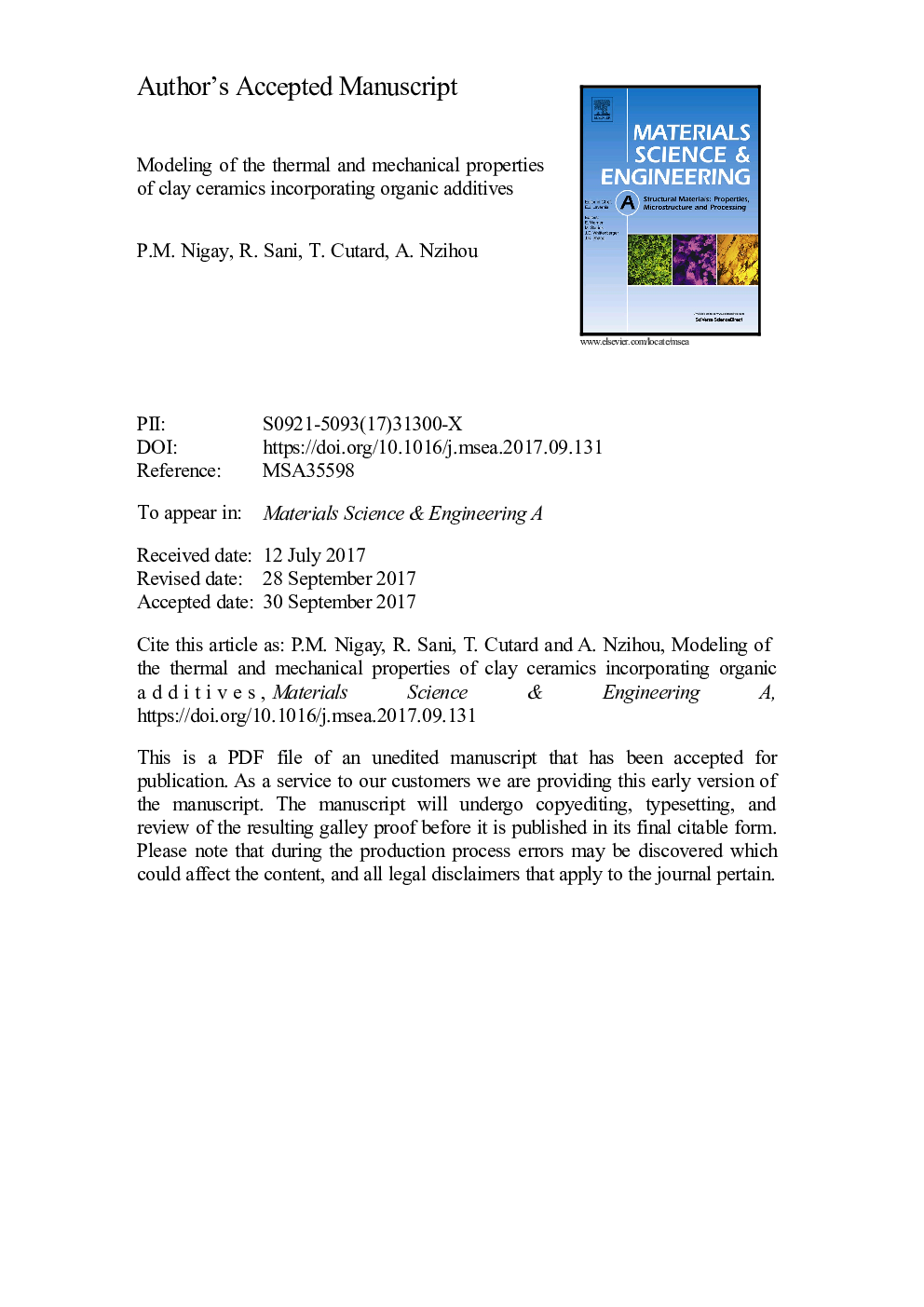| Article ID | Journal | Published Year | Pages | File Type |
|---|---|---|---|---|
| 5455132 | Materials Science and Engineering: A | 2017 | 30 Pages |
Abstract
This paper presents the results of a combined experimental and theoretical study on a clay ceramic used for building applications. The thermal and mechanical properties of the clay ceramic were improved by addition of organic additives. The organic additives consisted of Olive Stone Flour (OSF), with round-shape particles of 55 µm, and Wheat Straw (WS), with 877 µm particles in the form of fibers. It was found that the combustion of OSF and WS resulted in a porosity formation during the firing process. The morphology of these pores corresponded to that of the organic additives. Therefore, the addition of small OSF particles decreased the median pore size of the clay ceramic. It improved the mechanical strength of the clay ceramic by 12% for an 8 wt% addition of OSF. On the other hand, the WS fibers increased the clay ceramic anisotropy. This resulted in a 41% improvement of the thermal conductivity using an 8 wt% addition of WS. Finally, a model was developed from these experimental results to predict the thermal conductivity and the mechanical strength of the clay ceramic with other organic additives. They were predicted from the parameters of the organic additives (i.e., true density, swelling degree, particle size distribution, particle shape factor). The predictions indicated that the thermal conductivity is improved by 50% with a 25% improvement of the mechanical strength using small organic fibers, which is a step forward in the development of fired clay bricks that can be used for both insulation and structure purposes in building applications.
Related Topics
Physical Sciences and Engineering
Materials Science
Materials Science (General)
Authors
P.M. Nigay, R. Sani, T. Cutard, A. Nzihou,
